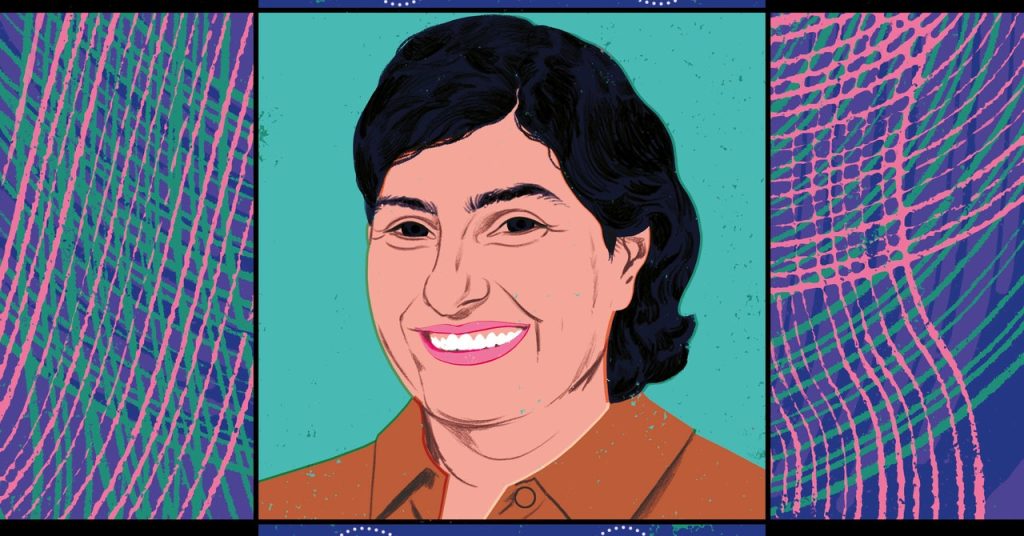Unraveling the Mysteries of the Universe: Dr. Nergis Mavalvala’s Groundbreaking Work in Gravitational Wave Detection
The Origins of the Universe
“Where did all this come from? How did it all get started?”
These are the questions that drive the work of Dr. Nergis Mavalvala, a renowned astrophysicist and the dean of MIT’s School of Science. The answer, she explains, lies in the groundbreaking work of Albert Einstein nearly a century ago. Einstein proposed the existence of gravitational waves—ripples in spacetime caused by the movement of massive objects like black holes. These waves, Dr. Mavalvala believes, hold the key to understanding the origins and evolution of our universe.
The Importance of Black Holes
Black holes, according to Dr. Mavalvala, are crucial building blocks of the universe. To gain a complete understanding of the world around us, we must study these enigmatic objects using every available means, including gravitational waves and light. By detecting and analyzing these waves, scientists can unlock the secrets of how our universe came to be and why it appears the way it does today.
The LIGO Project: A Journey of Discovery
Dr. Mavalvala’s journey into gravitational wave detection began in the early 1990s as a graduate student at MIT, working on the Laser Interferometer Gravitational-Wave Observatory (LIGO) project in the US. At the time, the existence of gravitational waves was still a topic of debate, and the LIGO team was considered a group of dreamers pursuing an improbable goal. However, the challenge and the potential for groundbreaking discoveries drew Dr. Mavalvala to this field.
Throughout her career, Dr. Mavalvala has received numerous prestigious awards and grants, including the MacArthur “genius” grant and the Lahore Technology Award. She was also named the LGBTQ Scientist of the Year in 2014.
The Historic Detection of Gravitational Waves
On September 14, 2015, the LIGO interferometers detected their first gravitational wave, marking a monumental milestone in the field of astrophysics. Dr. Mavalvala’s initial reaction was one of skepticism, as the team had to conduct numerous checks to confirm the legitimacy of the detection. As the reality of the discovery sank in, a sense of euphoria and ecstasy slowly took hold, signifying the beginning of a new era in our understanding of the universe.
Nurturing the Next Generation of Scientists
As the dean of MIT’s School of Science, Dr. Mavalvala recognizes the importance of working with young people in advancing scientific knowledge. She believes that the greatest scientific discoveries are often enabled by the work of young minds, and she encourages students to fearlessly pursue their interests in science. Despite her considerable administrative responsibilities, Dr. Mavalvala finds joy in being part of academia and teaching the next generation of scientists.
Pushing the Boundaries of Gravitational Wave Detection
Dr. Mavalvala’s research group continues to focus on the instrumentation necessary to detect gravitational waves, with a particular emphasis on the challenges posed by quantum mechanics. By exploring ways to manipulate the limits imposed by nature, her team aims to develop more sensitive gravitational wave detectors capable of observing fainter objects at greater distances.
The Power of Questioning and Embracing Failure
At the core of Dr. Mavalvala’s scientific approach lies the art of asking questions. She believes that skepticism is essential for asking the most important questions and making breakthroughs by challenging the existing world order. Failure, too, plays a crucial role in the scientific process, as not every idea leads to success. Dr. Mavalvala emphasizes that the journey of discovery is never complete; each new finding inevitably leads to a new set of questions, propelling the cycle of scientific inquiry forward.
As we continue to explore the mysteries of the universe, the work of scientists like Dr. Nergis Mavalvala reminds us that the pursuit of knowledge is an ongoing endeavor, driven by curiosity, perseverance, and the willingness to embrace the unknown.

1 Comment
A true trailblazer in the field of gravitational wave astronomy, her contributions are out of this world!